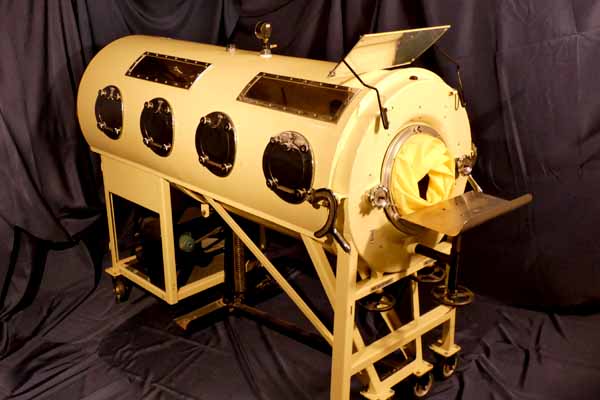
When University Medical Center Brackenridge closed its doors in 2017, its history as Austin’s premiere trauma center was temporarily silenced. Commemorative plaques and photographs were taken off walls. Artifacts were removed from display cases and tucked away in a basement storage room at nearby Dell Children’s Medical Center of Central Texas.
Now those objects have a new home.
In the fall of this year, Seton Family of Hospitals, of which Dell Children’s is a member, donated their materials to the Robert G. Mickey History of Medicine Gallery at the Texas Medical Association Louis J. Goodman Building in Austin.
Some of the more notable standouts include a cadaver skeleton, nurse and vintage candy striper uniforms, and an iron lung.
Iron lungs are often frightening memorials to the polio epidemic of the 1950s. The giant cylindrical devices were a medical marvel because they helped people breathe after polio had destroyed their respiratory muscles.
But the discovery of a vaccine in the 1950s and universal vaccination by the mid-1960s quickly rendered iron lungs unnecessary. Hospitals, which once had wards full of iron lungs, rapidly mothballed and then discarded the devices.
As unfounded fears about vaccines and requests for exemptions increase, the iron lung is a timely reminder of the painful medical therapies patients once endured when diagnosed with diseases that today are completely preventable with immunizations.
TMA is currently archiving the collection, including the iron lung, which will be displayed in the museum gallery as part of an exhibit in 2020.
Last Updated On
November 20, 2019
Originally Published On
November 20, 2019